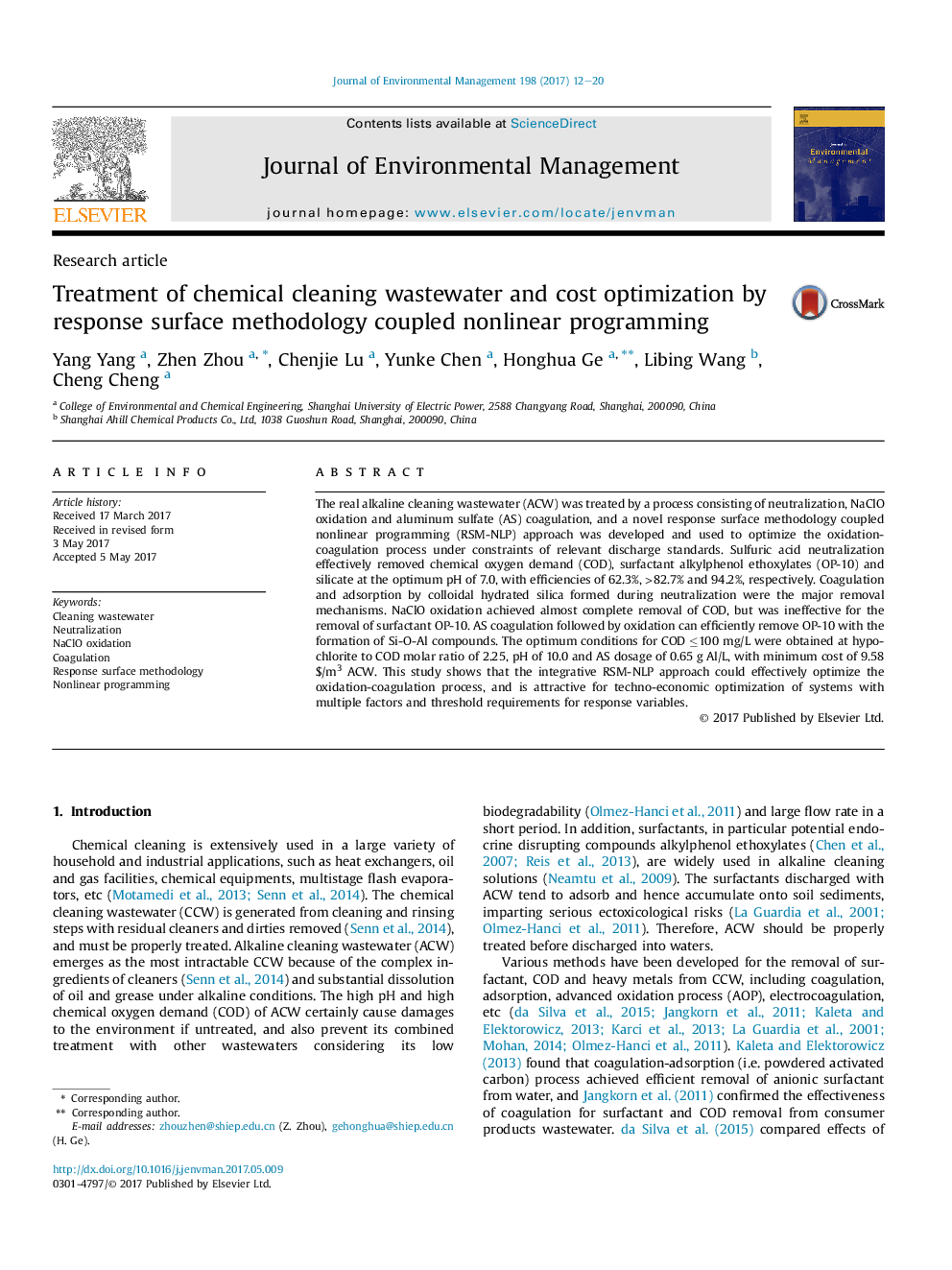| Article ID | Journal | Published Year | Pages | File Type |
|---|---|---|---|---|
| 5116713 | Journal of Environmental Management | 2017 | 9 Pages |
Abstract
The real alkaline cleaning wastewater (ACW) was treated by a process consisting of neutralization, NaClO oxidation and aluminum sulfate (AS) coagulation, and a novel response surface methodology coupled nonlinear programming (RSM-NLP) approach was developed and used to optimize the oxidation-coagulation process under constraints of relevant discharge standards. Sulfuric acid neutralization effectively removed chemical oxygen demand (COD), surfactant alkylphenol ethoxylates (OP-10) and silicate at the optimum pH of 7.0, with efficiencies of 62.3%, >82.7% and 94.2%, respectively. Coagulation and adsorption by colloidal hydrated silica formed during neutralization were the major removal mechanisms. NaClO oxidation achieved almost complete removal of COD, but was ineffective for the removal of surfactant OP-10. AS coagulation followed by oxidation can efficiently remove OP-10 with the formation of Si-O-Al compounds. The optimum conditions for COD â¤100 mg/L were obtained at hypochlorite to COD molar ratio of 2.25, pH of 10.0 and AS dosage of 0.65 g Al/L, with minimum cost of 9.58 $/m3 ACW. This study shows that the integrative RSM-NLP approach could effectively optimize the oxidation-coagulation process, and is attractive for techno-economic optimization of systems with multiple factors and threshold requirements for response variables.
Related Topics
Physical Sciences and Engineering
Energy
Renewable Energy, Sustainability and the Environment
Authors
Yang Yang, Zhen Zhou, Chenjie Lu, Yunke Chen, Honghua Ge, Libing Wang, Cheng Cheng,
